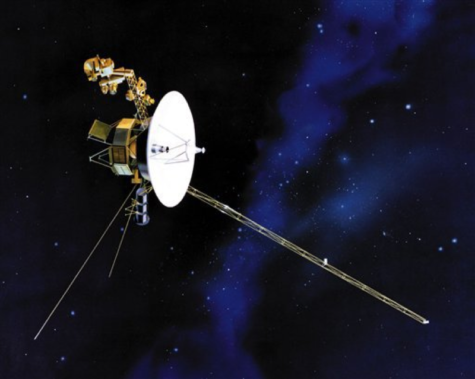Voyager 1 Thrusters Fired After 37 Years
January 3, 2018
The first man-made object ever to make it to interstellar space has been dormant for 37 years, until now.
For the last 40 years, the Voyager 1 has been floating through space, communicating information back to NASA. With the use of thrusters, the spacecraft can be turned and oriented so that an antenna on its surface faces Earth. However, the thrusters haven’t been touched since Voyager passed Saturn in 1980.
On Tuesday, November 28th, the thrusters had to be fired up for the first time in 37 years. NASA realized the antenna on the object nearly 13 billion miles away needed to be reoriented to face Earth. But the Voyager’s first line of thrusters, the attitude control thrusters, have been degrading. As NASA searched for a Plan B, they turned to the trajectory correction maneuver (TCM) thrusters, though unsure they would work.
After waiting 19 hours and 35 minutes, NASA finally received a signal from the probe. The TCM thrusters worked.
According to NASA, this maneuver could extend Voyager’s lifespan by up to three years. However, because the ship requires about one heater per thruster to work, the TCM thrusters will only work as long as the heaters last. After the heat runs out, NASA will try to use the attitude control thrusters again.
Originally, the Voyagers, sent into space 16 days apart, were meant to explore Jupiter, Saturn, Saturn’s rings, and the larger moons of the two planets. After discovering the ships’ capabilities using remote-control programming, Voyager 1 and 2 explored the outer planets of the solar system, 48 moons, and the rings and magnetic fields of the planets.
Looking forward, NASA said it plans to test similar thrusters on twin ship Voyager 2 and send it into interstellar space. In about 40,000 years, Voyager 1 will come within 1.7 light years of an obscure star within the Ursa Minor or Little Dipper constellation. Voyager 2 is estimated to come with the same distance of the star Rosa 248, a small star in the Andromeda constellation.
The field and particle instruments aboard both Voyagers will continue to study the Sun’s influence and the boundary of interstellar space going forward. As the spacecraft continue to race through space, the vast knowledge brought to Earth by the ships’ explorations will only continue to grow.



